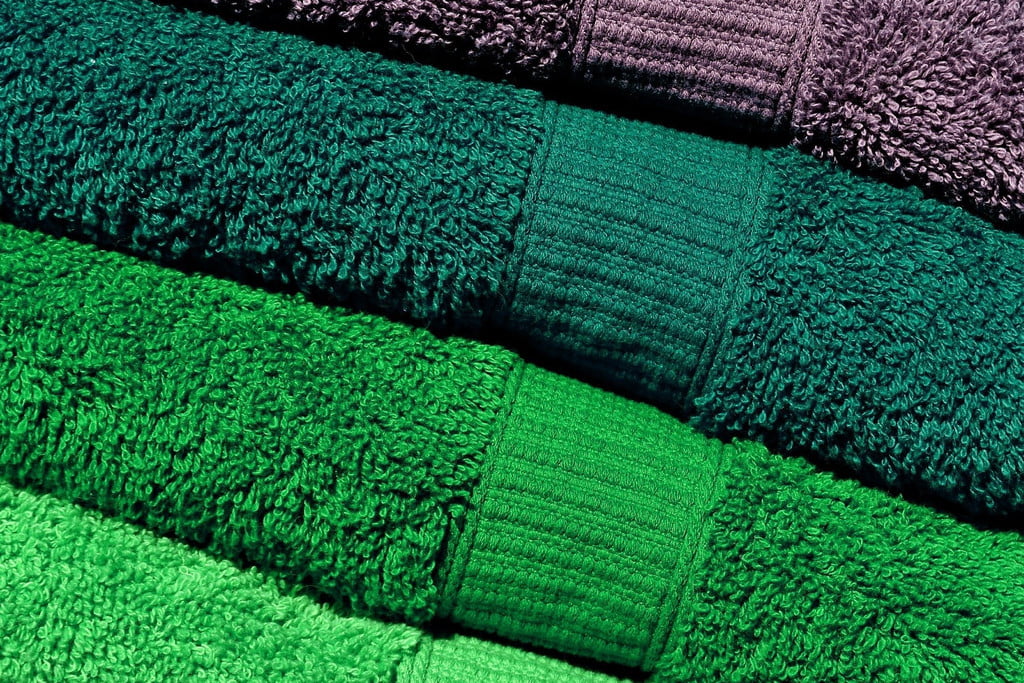
It’s such a great feeling when you step out of the shower and wrap yourself in a fluffy, soft, and fresh-smelling towel. But it just kills that great feeling when the towel has a weird, musty odor even though it’s fresh from the dryer. It may be an older towel that has just outlived its usefulness. Or, you may be washing it wrong. Yes, there is a right and wrong way to wash them. Washing bath towels correctly will keep them fluffy and preserve the color. Good towels should last about 10 years if you care for them properly.
Part of proper care starts with what happens after the bath or shower. Avoid hanging them on a hook because the bunched-up fabric will take too much time to dry, and they will develop a musty odor. Instead, hang them over a towel bar or a shower rod.

Don’t throw wet towels into the hamper or laundry basket for the same reason. Let them dry or put them right in the washer when you are done using them.
What is the best way to wash towels?
First, you should always wash a new towel before you use it. Those lovely towels stacked on the shelves at the store are treated with a finish, so they stay looking and feeling fluffy at the store. You want to wash that finish off because it inhibits absorbency. If it’s not washed, it will sort of squeegee the water off your body until you wear the finish off.
Towels should be washed separately from your other clothes for several reasons. Germs and bacteria from your clothes can transfer to your towels in the washer, and some may survive the dryer cycle. That’s not something you want to be rubbing on your body. You can adjust the temperature for towels if they are the only thing in that washer load.
If you are washing towels with your clothes, wash white towels with whites and wash colored towels with similar colors.
Washing specifics
Wash towels every three to four days.
For all towels, use about half of the recommended detergent and add a half cup of white vinegar in the rinse cycle. The vinegar will “set” the color of the colored towels and remove detergent residue. Colored towels should be washed on warm.
You can use nonchlorine bleach with colored towels — never mix vinegar and bleach. Make sure you are adding the vinegar to the rinse water, not the wash water.
Wash white towels in hot water with nonchlorine bleach. You need to use the nonchlorine bleach on the white towels because over time they can develop a subtle discoloration that will be evident if you put another white towel next to them.
If your towels have a musty smell and you can’t seem to get rid of it, wash the towels on one wash cycle with a half cup of baking soda. Then, wash in regular detergent — that should do the trick.
Don’t overload the washer with towels. They are heavy and they tend to clump up, then don’t wash or rinse properly.
Use fabric softener every three to four washes, not in every wash cycle. Fabric softeners can create a waxy buildup on towels, which will reduce their absorbency.
On to the dryer
You want to dry on low or durable fabric dryer settings. Shake the towels out before you put them in the dryer. This will separate the towel fibers, and they will dry faster. If you just throw them into the dryer all bunched up, they will take longer to dry and will retain any creases that get set as they start to dry.
Dry them completely — folding them damp and putting them away will guarantee that musty smell will be back.
Still have an odor?
If you’ve washed and dried the towels correctly and there is still and odor, it’s likely from your washer. Dead skin and dirt get trapped in your washer, and that in turn gets deposited on towels — because they are so absorbent — during the rinse cycle. To get perfect towels, you will need to wash your washer. This will actually benefit all of your clothing. Even if you’ve wiped out your washer, a small amount of rinse water always sits in parts of the washer you can’t see. Run a wash cycle on hot with 2 cups of vinegar in the washing machine. Wipe it out and then run one cycle again on hot, and that should do it.
With a little care, your towels should stay soft and fluffy as well as colorful for years.




